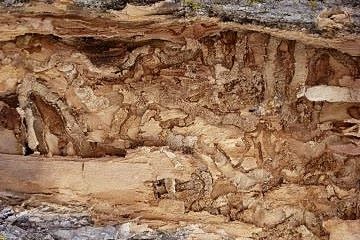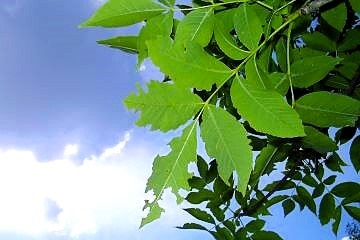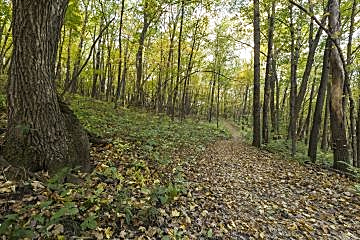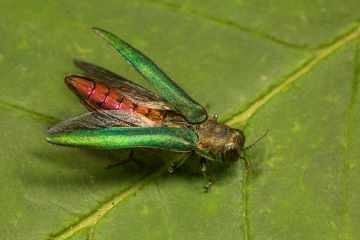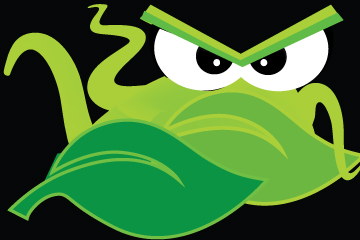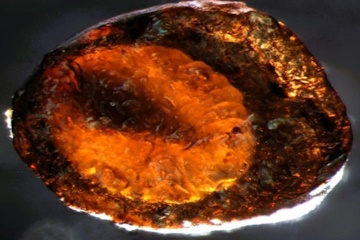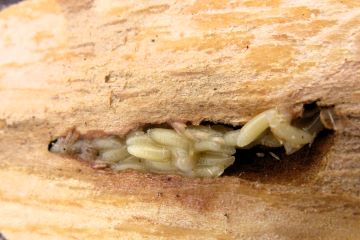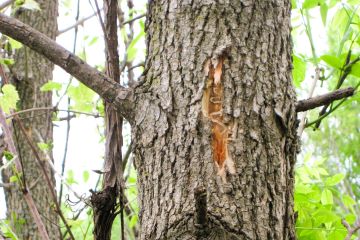

Minnesota partner organizations who serve meat and poultry processors are encouraged to apply for the Minnesota Department of Agriculture’s (MDA) Meat Processing Train & Retain Grant.
The Meat Processing Train & Retain Grant program will award one-time funding to partner organizations that will work with small- to medium-sized meat and poultry processors in hiring and training new employees through the development of incentive projects like tuition reimbursements, sign-on and retention bonuses, and childcare stipends.
Eligible partner organizations include foundations engaged in economic development, community development financial institutions, federally recognized economic development districts, and community development corporations.
The MDA anticipates awarding up to $350,000 in Train & Retain Grants using a competitive review process. The maximum award amount is $250,000, and the minimum award amount is $10,000. Projects must be completed by June 30, 2026.
This grant program prioritizes organizations working in partnership with Minnesota State Colleges and Universities; or whose efforts would target or serve meat or poultry processing operations that are in distressed communities, based on the Economic Innovation Group’s Distressed Communities Index (DCI).
Grant applications will be accepted until 4 p.m. Central Time on Monday, April 28, 2025. For further information and to submit your online application, visit the Meat Processing Train & Retain Grant web page.
###
Media Contact
Nikki Warner, MDA Communications
651-201-6694
Nikki.Warner@state.mn.us
SPAC Meeting
The Minnesota Seed Program Advisory Committee provides guidance to the Minnesota Department of Agriculture’s Seed Regulatory Program, ensuring that seed laws and regulations align with industry needs and regulatory requirements. The committee represents stakeholders such as seed producers, farmers, retailers, and researchers, offering input on enforcement priorities, program improvements, and emerging issues like noxious weed seeds and truth-in-labeling concerns. It also advises on seed testing and labeling standards, fee structures, and funding to support the program’s operations effectively. Through its recommendations, the committee helps maintain a fair, transparent, and science-based regulatory framework for the state’s seed industry.
Join the Teams meeting
Meeting ID: 263 705 906 043
Passcode: vy7SQ7kE
The Minnesota Department of Agriculture (MDA) has confirmed emerald ash borer (EAB) in three new locations in Minnesota over the winter. EAB was confirmed in Aitkin County for the first time. There are now 54 counties in the state with EAB. In Pine and St. Louis counties, infestations were discovered in new areas, expanding the original quarantine areas. No new EAB finds occurred in Mille Lacs County, but the quarantine is also being expanded due to the proximity to the Aitkin County find.
Where was EAB recently confirmed:
| County | Location | Discovery Details |
| Aitkin | Malmo Township | A county forester found evidence of EAB at a timber sale site and notified state officials for confirmation. |
| Pine | Norman Township | The MDA confirmed an EAB find submitted by a resident in northern Pine County. |
| St. Louis | City of Virginia | The MDA confirmed an EAB report submitted through the department’s online Report a Pest service. |
What is EAB:
EAB was first discovered in Minnesota in 2009. The insect larvae kill ash trees by tunneling under the bark and feeding on the part of the tree that moves nutrients up and down the trunk. Often, the trees show several signs of infestation because of this. Woodpeckers like to feed on EAB larvae, and woodpecker holes may indicate the presence of emerald ash borer. Also, EAB tunneling can cause the bark to split open, revealing characteristic S-shaped galleries underneath.
Quarantine information:
The MDA is enacting emergency quarantines in Aitkin County and new areas of Mille Lacs, Pine, and St. Louis counties due to the recent EAB discoveries. All of Aitkin County will be quarantined. Expanded quarantine boundaries in Mille Lacs and Pine counties will put each of the counties under full quarantine. The quarantine in St. Louis County is also expanded further north. See map for details. The quarantines limit the movement of firewood and ash material out of the area.
The MDA issues quarantines for all areas known to have EAB to reduce the risk of further spreading the tree-killing insect.
More information:
A virtual informational meeting for residents and tree care professionals will be held on Wednesday, March 26 from 10–11 a.m. Experts from the MDA will give a brief presentation followed by a question-and-answer session. Register at www.mda.state.mn.us/eab.
The public will also have an opportunity to provide input on the proposed emergency quarantines before the quarantines become formal. The MDA is taking comments on the proposed formal quarantine now through May 5, 2025, and recommends adopting the quarantine on May 6, 2025. The proposed quarantine language can be found at www.mda.state.mn.us/eab.
Comments can be made during the virtual meeting or by contacting:
Kimberly Thielen Cremers
Minnesota Department of Agriculture
625 Robert Street North
St. Paul, MN 55155
Kimberly.TCremers@state.mn.us
There is more EAB information on the MDA website.
###
Media Contact
Brittany Raveill, MDA Communications
651-201-6131
Brittany.Raveill@state.mn.us
Many farmers and applicators will soon apply anhydrous ammonia (NH3) prior to planting or sidedress after planting. Even with a rush against time and the weather, safety should never be compromised. Accidents involving anhydrous ammonia have proven how dangerous and deadly the chemical can be when not handled properly.
The Minnesota Department of Agriculture (MDA) is providing the following tips to farmers and applicators so they can safely apply anhydrous ammonia.
- Always wear appropriate goggles and gloves. Never wear contact lenses.
- Be sure to have a clean, adequate emergency water supply of at least 5 gallons.
- Exercise caution when making connections and disconnections as if lines contain anhydrous ammonia.
- Stand upwind when connecting, disconnecting, bleeding lines, or transferring NH3.
- Close, bleed, disconnect, and secure valves and transfer lines when taking breaks or disconnecting lines, and be sure to handle hose end valve by the valve body.
- Position equipment away and downwind from homes, people, and livestock.
Safety is also key to those maintaining anhydrous ammonia equipment. Never assume NH3 lines are empty, always wear proper protective equipment, and have access to safety water.
When towing a nurse tank down the road, drive sensibly. Do not go any faster than 30 miles per hour, display a slow-moving vehicle (SVM) emblem visible from the rear, and be sure the tank is secured to the tractor or truck with two separate, independent chains that supplement the hitch pin/clip.
If an accident or spill occurs, immediately call 911 and then the Minnesota Duty Officer at 1-800-422-0798 or 651-649-5451.
You can find more safety, storage, and transportation information on the MDA’s website at www.mda.state.mn.us/nh3.
###
Media Contact
Allen Sommerfeld, MDA Communications
651-201-6185
Allen.Sommerfeld@state.mn.us
Those wanting to grow and process hemp in Minnesota in 2025 must apply for a license with the Minnesota Department of Agriculture (MDA) by April 30. Each license is valid only through December 31 of the year it is issued. Licensees must reapply annually to remain in the program. A license from the MDA is required for individuals and businesses.
To date, about 50 people have applied for a 2025 MDA license. In 2024, there were 183 applicants.
These licenses are for growing and processing industrial hemp only. The hemp grower or processor application is not for the growth or sale of adult-use or medical cannabis. The application is also not intended for the sale of hemp-derived cannabinoid products. Adult-use and medical cannabis information can be found on the Office of Cannabis Management website.
The industrial hemp application can be found on the MDA website. Along with the online form, first-time applicants and authorized representatives need to submit fingerprints and pass a criminal background check.
Growers and processors need to be aware of the following for 2025:
- All authorized representatives designated by the applicant must pass a criminal history background check prior to the issuance of a license.
- Every lot of hemp grown requires pre-harvest THC regulatory testing. Each official regulatory sample collected by the MDA will cost $100.
- The MDA licenses processors that handle raw hemp and initially process it by extraction, decortication, devitalization, crushing, or packaging, and the department will continue random inspections of processor locations.
- License fees will remain the same for new and returning applicants plus a 5% surcharge to support the modernization of the MDA's technology systems. The minimum cost of a grower license is $400. A processing license is a minimum of $500.
Questions about the MDA’s Industrial Hemp Program should be sent to hemp.mda@state.mn.us or 651-201-6600.
Background
Industrial hemp, hemp, cannabis, adult-use cannabis and marijuana are all types of the same plant, Cannabis sativa. Industrial hemp differs by the concentration level of the psychoactive compound tetrahydrocannabinol (THC) within the plant containing 0.3% Total THC or less, and levels above that are considered adult-use cannabis or marijuana. MDA does not license or oversee the manufacture or sale of Hemp-derived cannabinoid extracts and products. They are regulated by the Office of Cannabis Management.
Minnesota operated under a hemp pilot program from 2016-2020. In 2021, the program began operating under a new, federally approved state plan that governs production and regulation.
###
Media Contact
Brittany Raveill, MDA Communications
651-201-6131
Brittany.Raveill@state.mn.us
Minnesota’s continuous living cover crops have received a boost to further their advancements across the state. The Minnesota Department of Agriculture (MDA) has awarded a total of $431,637 to 10 new projects under the Developing Markets for Continuous Living Cover Grant. These grants help develop enterprises, supply chains, and markets for continuous living cover crops and cropping systems in the early stage of commercial development.
Funding was provided to the MDA by the Minnesota Environment and Natural Resources Trust Fund and state’s General Fund.
Continuous living cover (CLC) refers to agricultural systems in which there are living plants and roots in the ground throughout the entire year. This can take many forms, from winter cover crops sown between summer annuals to agroforestry practices, perennial forage crops, perennial biomass crops, and perennial grain production. This includes but is not limited to regenerative poultry silvopasture systems, Kernza® perennial grain, winter camelina, and elderberry.
CLC crops have been shown to enhance water and soil quality, sequester carbon, build soil health, and provide greater biodiversity and pollinator habitat. Significant environmental benefits of these crops will result from widespread production, which requires robust value chains and markets.
| Organization Name | Project Summary | Award Total |
|---|---|---|
| Bang Brewing Company LLC | Increase the percentage of Kernza® in their beer to meet the Perennial Percent™ label and improve marketing. Purchase and convert a van to sell beer as the sole brewer at Mill City Market. | $45,000 |
| Estling Farms Inc | Develop a dedicated seed cleaning line for emerging continuous living cover crops. A new seed cleaning line will reduce the cost of CLC crop seed for farmers in northern Minnesota. | $45,000 |
| Midwest Elderberry Cooperative | Improve the developing regional hub for harvested American elderberries by purchasing a used refrigerated container for storage and paving the driveway to accommodate large trucks. | $45,000 |
| Midwest Hazelnuts LLC | Purchase the equipment, supplies, and services needed for one aggregation station at a Midwest Hazelnuts LLC Go First Farm in Minnesota. | $44,772 |
| Perennial Pantry | Create marketing content and strategies to enhance capacity and increase sales of CLC products. | $45,000 |
| Perennial Promise Growers | Continue market expansion for Kernza® and value-added products through customer lead generation/qualification/cultivation, provision of samples to prospective users, placement and fulfillment of orders, post-sale customer service, and coordination with value-added partners. | $45,000 |
| Regenerative Agriculture Alliance | Purchase and distribute improved Midwest Hazelnut LLC plant material directly to growers involved with the Poultry-Centered Regenerative Agroforestry ecosystem. This project will also fund training opportunities for growers. | $35,865 |
| Sturdiwheat Inc. | Modify existing recipes to include 1-5% perennial grain flour and update the packaging design to highlight the perennial grains. | $45,000 |
| SUN Consulting Inc. | Build a self-propelled, mound bed cutter to sever the new woody stem of hazelnuts below the new root base, to harvest 2-year-old, farm-ready, bare root “whips” from propagation beds. | $36,000 |
| Tree Range Farms | Increase operational capacity to market the silvopasture poultry to Minnesota schools, communities, retailers, and restaurants. | $45,000 |
###
Media Contact
Allen Sommerfeld, MDA Communications
651-201-6185
Allen.Sommerfeld@state.mn.us
In 2025, the Minnesota Department of Agriculture (MDA) proposed 12 areas in Minnesota to be aerially managed for spongy moth with Btk (Bacillus thuringiensis var. kurstaki). Spongy moth is a destructive invasive pest that threatens forest health. Btk is a bacterial insecticide that kills spongy moth caterpillars and is used on high-risk, dense populations.
There is only a short window of time in the spring where Btk is effective, due to the insect’s life cycle. The MDA has not received necessary federal funds for spongy moth Btk aerial management in time and has been forced to cancel these proposed operations.
The areas with canceled Btk management are in Anoka, Carlton, Itasca, St. Louis, and Winona counties, totaling 2,752 acres. This includes canceling the proposed work in the cities of Coon Rapids, Grand Rapids, and Winona.
For decades, MDA in partnership with the United States Department of Agriculture (USDA) Forest Service’s Slow the Spread program has used aerial management to reduce the spread of spongy moth by more than 60%. In Minnesota over 1.1 million acres have been successfully aerially managed.
“Having to cancel Btk aerial management operations in these areas jeopardizes the future success of this program. Spongy moth populations in these areas will likely increase and advance quicker into neighboring areas, making future years of management more complicated and costly,” said MDA Commissioner Thom Petersen.
To prevent any human-assisted spread from these unmanaged areas, the MDA may consider implementing temporary quarantines, restricting the movement of any spongy moth life stages or woody tree material from leaving the area.
The MDA is still planning to move forward with other ways to manage spongy moth populations. We propose to manage 112,000 acres with an aerially applied mating disruption pheromone that stops the moths from reproducing. The MDA will also be conducting our yearly survey that tracks spongy moth populations in the state. Both strategies also rely on federal funding.
Overall, federal funding for these strategies is still uncertain; however, the MDA has been assured to receive initial funding for the spongy moth survey. It is still unknown if federal funds to perform aerial mating disruption operations will be distributed in 2025.
A threat to Minnesota’s forest is a threat to many Minnesotans’ livelihoods and our state’s economy. The MDA will continue to work within its state program to monitor spongy moth populations and to advocate for the best possible management strategies in the future.
###
Media Contact
Brittany Raveill, MDA Communications
651-201-6131
Brittany.Raveill@state.mn.us

